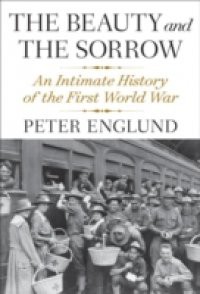In this masterly, highly original narrative history, Peter Englund takes a revelatory new approach to the history of World War I, magnifying its least examined, most stirring component: the experiences of the average man and womannot only the tragedy and horror but also the absurdity and even, at times, the beauty. The twenty people from whose journals and letters Englund draws are from Belgium, Denmark, and France; Great Britain, Germany, and the Austro-Hungarian Empire; Italy, Australia, and New Zealand; Russia, Venezuela, and the United States. There is a young man in the British army infantry who had been considering emigrating until the war offered him its ';grand promise of change' and a middle-aged French civil servant, a socialist and writer whose ';faith simply crumbled' at the outbreak of war. There is a twelve-year-old German girl thrilled with the news of the army's victories because it means that she and her classmates are allowed to shout and scream at school. There is an American woman married to a Polish aristocrat, living a life of quiet luxury when the war begins but who will be moved, ultimately, to declare: Looking Death in the eyes, one loses the fear of Him. From field surgeon to nurse to fighter pilot, some are on the Western Front, others in the Balkans, East Africa, Mesopotamia. Two will die, one will never hear a shot fired; some will become prisoners of war, others will be celebrated as heroes. But despite their various war-time occupations and fates, genders and nationalities, they will be united by their involvementwitting or otherwisein The Great, and terrible, War. A brilliant mosaic of perspectives that moves between the home front and the front lines, The Beauty and the Sorrow reconstructs the feelings, impressions, experiences, and shifting spirits of these twenty particular people, allowing them to speak not only for themselves but also for all those who were in some way shaped by the war, but whose voices have been forgotten, rejected, or simply remained unheard.

